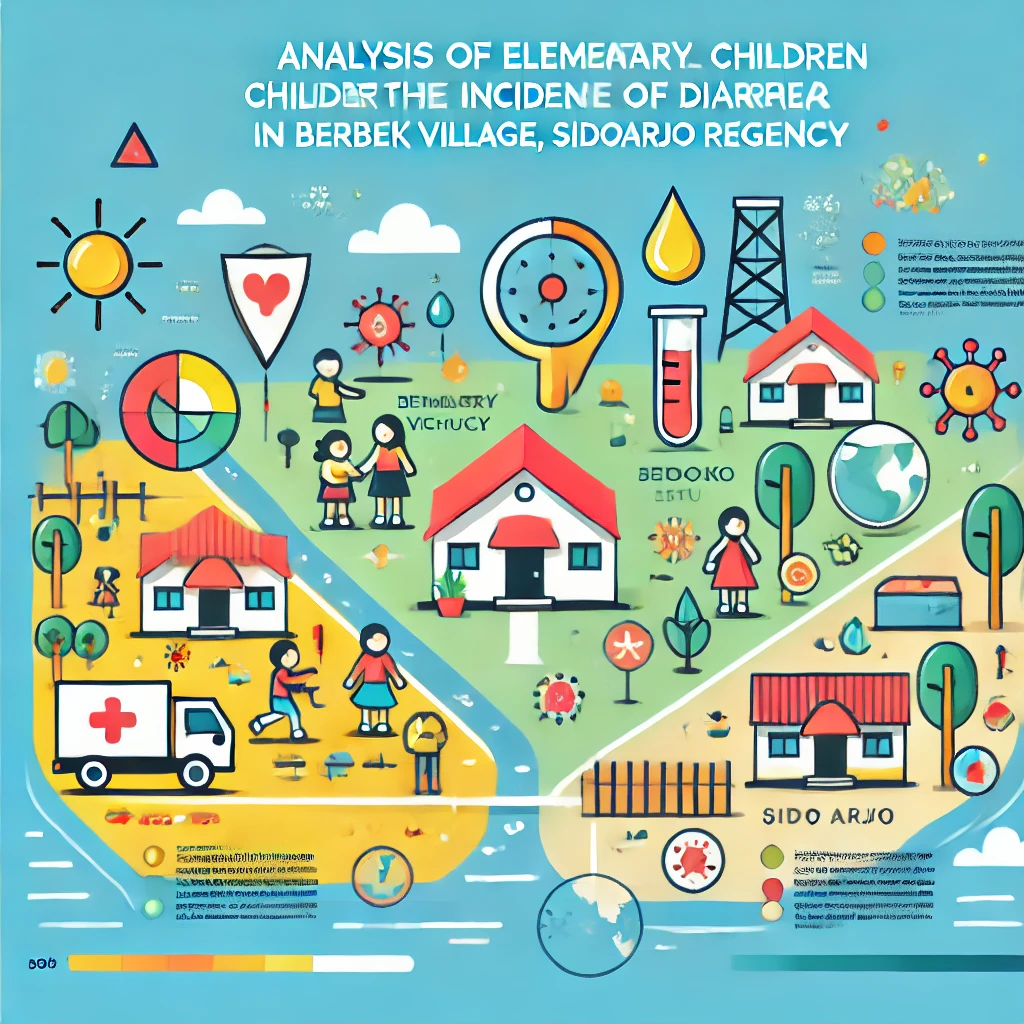Analysis of Elementary School Children's Behavior on the Incidence of Diarrhea in Berbek Village, Sidoarjo Regency

Downloads
Diarrheal diseases often occur in school children with a frequency of liquid bowel movements three or more times a day. Environmental and behavioural factors affect diarrhea in children. This study aims to analyze the relationship between elementary school children's behaviour and diarrhea in Berbek Village in 2024. Observational analytical research with a cross-sectional approach was conducted in three elementary schools in Berbek Village. The study population was 529 children from grade 4 to grade 6, with samples taken by stratified random sampling. Data were collected through observation and interviews using questionnaires and analyzed with the Chi-square test. The results showed that there was a significant relationship between knowledge (p=0.000), attitude (p=0.000), attitude (p=0.000) and behaviour (p=0.003) on the incidence of diarrhea. Still, there was no relationship between infrastructure facilities (p=0.891) and school policies (p=0.891). It is recommended that schools expand students' knowledge and attitudes about clean and healthy living behaviours (PHBS) with visual media that are attractive and easy to understand, and teachers provide examples of the implementation of PHBS in schools and complete school infrastructure facilities to be more adequate.
Copyright (c) 2024 Fernanda Radianti Dwi Putri Fernanda

This work is licensed under a Creative Commons Attribution 4.0 International License.



















